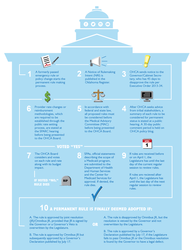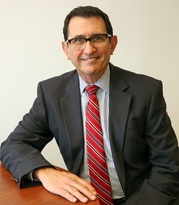|
Fall 2018, Vol. 2

 |
|
The Oklahoma Health Care Authority would like to thank our provider community, members, state legislators and other stakeholders for their participation in both our statewide Community Engagement meetings and our Regional Strategy Forums. By sharing your ideas, you help shape the work we do. Look for updates on our progress in future newsletters and agency reports.
We look forward to our continued partnership in creating a healthier Oklahoma.
Back to top
|

 The OHCA recently received notification that Insure Oklahoma, the state’s premium assistance program for businesses and employees, has been reauthorized by the federal Centers for Medicare & Medicaid Services (CMS) for another five years.
Historically, Insure Oklahoma has been reauthorized on a yearly basis. However, this year CMS approved the waiver to secure the program for five years, effective Aug. 31, 2018, through Dec. 31, 2023.
Nearly 4,600 businesses and more than 19,600 lower-income Oklahomans are enrolled in either Insure Oklahoma’s Employer-Sponsored Insurance (ESI) plan or Individual Plan.
Read more.
Back to top
|
 |
In May, we reported on a new federal law requiring that states implement electronic visit verification (EVV) for all Medicaid personal care services and home health services that require an in-home visit by a provider. Original implementation was set for Jan. 1, 2019, for personal care services and Jan. 1, 2023, for home health services. The OHCA recently received word that timeline has been revised.
Under HR 6042, states now have until Jan. 1, 2020, to comply with the requirement to establish an EVV system for personal care services. In addition, the bill also excludes specified services from such verification system requirements, including inpatient hospital services and 24-hour residential group home services.
States that fail to comply by the Jan. 1, 2020, deadline are subject to reductions in their Federal Medicaid Assistance Percentage (FMAP). This means they would receive less federal dollars for their Medicaid programs.
Back to top
 |
|
Bells will be ringing, our phones will not.
The OHCA will be closed on the following dates, so that our staff may enjoy time with their families for the holidays. These dates are per executive order from the governor.
Dec. 24-25, 2018 -- Christmas
Jan. 1, 2019 -- New Year's Day
|
We will be happy to assist you during normal business hours. Thanks for understanding.
Season's greetings!
Back to top

The next phase of OHCA’s permanent rulemaking process is right around the corner. The first set of proposed rules will be made available for public comment on Dec. 17, 2018, with the second round on Jan. 16, 2019. All proposed rules can be found online at www.okhca.org/proposed-changes. The Proposed Changes webpage is designed to give all constituents an opportunity to review and make comments regarding proposed policy changes.
As required by state statute, OHCA provides a Rule Impact Statement for each proposed rule. This includes the legal authority, possible impact to providers and/or members, projected budget impact and reason for the proposed changes. We also highlight all text changes.
Permanent rule recommendations will go to the Legislature and governor for action in the spring, with a projected implementation date of fall 2019. We encourage you to review each proposed rule and give your input.
 |
|
Click the image at left for more details on OHCA's rulemaking process.
|
Back to top
 Our federal oversight, the Centers for Medicare & Medicaid Services (CMS), prohibits providers from billing Medicaid members who miss scheduled appointments.
A missed appointment is not a distinct reimbursable SoonerCare (Oklahoma Medicaid) service, but a part of the provider's overall costs of doing business. The SoonerCare rate covers the cost of doing business, and providers may not impose separate charges on SoonerCare clients. Below is the Code of Federal Regulations that states that physicians who participate in Medicaid must accept Medicaid reimbursement as “payment in full."
§447.15 Acceptance of State payment as payment in full.
A State plan must provide that the Medicaid agency must limit participation in the Medicaid program to providers who accept, as payment in full, the amounts paid by the agency plus any deductible, coinsurance or copayment required by the plan to be paid by the individual. The provider may only deny services to any eligible individual on account of the individual's inability to pay the cost sharing amount imposed by the plan in accordance with §447.52(e). The previous sentence does not apply to an individual who is able to pay. An individual's inability to pay does not eliminate his or her liability for the cost sharing charge.
To learn what actions you may be allowed to take, please refer to OHCA Policies and Rules regarding SoonerCare on our website (okhca.org).
Back to top
|

 Caring for patients may begin well before they check-in to your facility. Just getting a member in to be seen can be a roadblock, but it doesn't have to be. TripCare gives providers a way to help members obtain reliable transportation to and from their office visits with a simple log-in.
Much like members use SoonerRide to schedule rides for their non-emergency health care appointments, TripCare allows providers to schedule patient transportation - and at no cost!
Just imagine being able to increase care access and coordination with a few clicks of the mouse! That could mean fewer missed appointments and/or scheduling conflicts.
Download this EDI form to get started!
Providers will receive a username and password after the EDI form is submitted to LogistiCare via fax at 1-800-597-2091.
Both TripCare and SoonerRide are operated by Logisticare.
Back to top
|
The rollout continues of InterQual® evidence-based questions and answers into the medical prior authorization (PA) function of the SoonerCare Provider Portal. The transition to this new PA process, as first described in Provider Letter 2017-35, will include most medical PA requests*.
OHCA has a tutorial available for download on our Training webpage. “Prior Authorizations with InterQual® Integration” walks providers through what to expect, what is required, and how to complete the new PA request successfully. We encourage all medical providers to familiarize themselves with these instructions.
If you have any questions about this PA process change or the InterQual® implementation, please call the OHCA Provider Helpline at 800-522-0114.
* As a reminder: Approved PAs are not a guarantee of payment due to a variety of reasons (such as eligibility, etc.).
Back to top

Be prepared. Help avoid awkwardness at the pharmacy counter.
 While opioid pain relievers play an important role in pain management, their abuse and misuse has become a growing public health issue in Oklahoma and nation-wide.
Effective Jan. 7, 2019, OHCA will implement the first phase of a daily opioid Morphine Milligram Equivalent (MME) limit for SoonerCare pharmacy claims, this will include both short-acting and long-acting opioid formulations. Opioid MME daily totals exceeding 240 will require prior authorization (PA) with patient-specific, clinically significant reasoning why the member requires more than 240 MME per day.* This limit will gradually decrease over a six-month period, allowing providers to develop and implement tapering plans for appropriate patients. The end goal is a target of 100 MME or less.
The quantity edit will progress in three (3) phases, with the final phase scheduled to occur in July 2019.
This advance notice is to provide pharmacists and prescribers the opportunity to review patients’ prescriptions.
Providers can also access a patient’s MME totals by consulting the Oklahoma Prescription Monitoring Program (PMP) Aware system. OHCA is encouraging providers to access the PMP site and begin tapering (where appropriate) members who exceed the 100 MME threshold.
*Medications provided for Medication-Assisted Treatment (MAT) will be exempt from this policy.
Back to top
 In recent years, Oklahoma has seen an alarming rise in reported cases of sexually transmitted diseases (STDs). According to a report from the Centers for Disease Control and Prevention (CDC), the rate of all reported STDs in Oklahoma has increased by nearly 17 percent since 2013. Syphilis rates have more than tripled, and the rate of infants born with syphilis increased from zero to more than 13 per 100,000 live births. Oklahoma currently ranks 6th in the nation for gonorrhea infections and 16th for chlamydia infections.1
|
Antibiotic resistance represents an additional area of concern. In 2012, the Gonococcal Isolate Surveillance Project (GISP) identified Oklahoma City as being one of only five cities in the nation to have a Neisseria gonorrhoeae isolate with the highest degree of ceftriaxone resistance. Oklahoma City is the only city since 1997 to be associated with this elevated level of resistance.1 The CDC categorizes drug-resistant Neisseria gonorrhoeae, Clostridium difficile, and Carbapenem-resistant Enterobacteriaceae (CRE) as “urgent threats.” Overuse of antibiotics is a known contributor to increased rates of antibiotic resistance.2
While not currently permissible in Oklahoma, 42 states allow Expedited Partner Therapy (EPT). EPT is “the delivery of medications or prescriptions by persons infected with an STD to their sex partners without clinical assessment of the partners.”3 Treatment recommendations for gonorrhea, chlamydia, and syphilis include EPT and strategies for prevention and control. A central prevention strategy is the use of condoms during sexual activity. SoonerCare currently provides coverage for multiple brands of both male and female condoms. (See OHCA's Covered Family Planning products.) A prescription is required for coverage of these over-the-counter items; however, these prescriptions do not count toward the monthly prescription limit.
SoonerCare has developed prescriber and patient materials to increase implementation of evidence-based antibiotic guidelines. To receive these materials or request additional information, please contact Jacki Travers, Pharm.D., at 405-271-5935 or jacki-travers@ouhsc.edu.
References
- Centers for Disease Control and Prevention. Sexually Transmitted Disease Surveillance 2017. Atlanta: U.S. Department of Health and Human Services; 2018. Available at https://www.cdc.gov/std/stats/. Accessed October 11, 2018.
- Centers for Disease Control and Prevention. Antibiotic Resistance Threats in the United States, 2013. Atlanta: U.S. Department of Health and Human Services; 2013. Available at https://www.cdc.gov/drugresistance/threat-report-2013/pdf/ar-threats-2013-508.pdf. Accessed October 11, 2018.
- Centers for Disease Control and Prevention. Legal Status of Expedited Partner Therapy (EPT). Atlanta: U.S. Department of Health and Human Services; 2018. Available at: https://www.cdc.gov/std/ept/legal/default.htm.
Back to top

 Eligible professionals (EPs) and hospitals (EHs) who have not participated in the Electronic Health Record (EHR) Incentive Program prior to 2016 are no longer able to participate in the program.
Any EH participating in the program must attest in consecutive years. Hospitals are no longer able to skip a year.
Please note: For Program Year 2018, EPs and EHs may attest to a 90-day reporting period for Meaningful Use but are required to report on a full year for clinical quality measures, or CQMs. The only exception is for EPs in their first year of Meaningful Use. They cannot submit their 2018 attestation any earlier than Jan. 1, 2019.
If you have any questions or concerns regarding this program, please contact the EHR Incentive Team at EHRIncentive@okhca.org or by phone at 405-522-7347. You can also visit us online at okhca.org/ehr.
Back to top
|

The Great American Smokeout (GASO) is an annual event encouraging smokers to quit for at least one day. This year, hundreds of Oklahomans used FREE Oklahoma Tobacco Helpline services during the event. Following this year’s event, we encourage you to speak to your patients and motivate them to join thousands of smokers who used this day to leave tobacco behind for good. As their trusted health care provider, you can help them take the first step on their tobacco-free journey.

Although GASO is about quitting for one day, many smokers choose this day to begin a tobacco-free lifestyle. Other smokers use this time of year to quit tobacco for the holiday season. This can be a stressful time for them, but going into the holidays tobacco free can make all the difference.
Talk to your patients about the resources available from the Oklahoma Tobacco Helpline. Okahomans who sign up for the Helpline can receive FREE services, including text and email support and nicotine replacement therapy. They’ll have 24/7 access to nonjudgmental Quit CoachesTM and an online community to support them when times are tough.
To promote the Helpline in your office, FREE promotional materials such as brochures, posters and tip cards are also available at OKhelpline.com. You can order these materials to be displayed in your office and provide an easy way to start the conversation with your patients about quitting tobacco. We also offer free pens and badge clips. If you've run out of these materials, be sure to reorder today!
Choosing a tobacco-free lifestyle is one of the most important health decisions your patients can make. During the month of GASO, help them improve their health with the assistance of the Oklahoma Tobacco Helpline. Encourage your patients to call 1-800-QUIT NOW or visit OKhelpline.com.
Back to top

 |
|
Tanya Case, of Duncan, was recently appointed to a second four-year term on the OHCA Board. She was first appointed in 2014 by former Speaker of the House Jeff Hickman and most recently by Charles McCall, current Speaker of the House of Representatives.
As one of the seven OHCA board members, Case helps to oversee the agency that is responsible for the care and well-being of more than 1 million Oklahomans each year including children, pregnant women, individuals with disabilities and seniors. Additionally, the board is responsible for the oversight of a more than $5 billion budget to accomplish the mission of the agency to responsibly purchase health care in the most efficient and comprehensive manner possible.
|
Case worked in health care in Oklahoma for 35 years with most of those years spent in executive leadership positions of health plans. She retired in November 2015 as the Executive Director of the Oklahoma Temporary High Risk Pool (OTHRP) which was Oklahoma’s Pre-Existing Condition Insurance Plan (PCIP) created by the Affordable Care Act in March 2010. During her tenure with OTHRP, Case served on the board of directors of the National Association of State Comprehensive Health Insurance Plans (NASCHIP), serving as Chairman from 2014-15.
Case has also served as the director of the Oklahoma Office of Rural Health, Oklahoma State Department of Health (OKC); the director of First Health West, a physician/hospital network (Lawton); the director of Prime Advantage, a HMO owned and operated by Comanche County Hospital Authority which served as a commercial and Medicaid HMO; and the executive director of Lawton Community Health Center.
Read more.
Back to top
 Dr. Michael Herndon, Chief Medical Officer for the Oklahoma Health Care Authority (OHCA), was recently appointed to a six-year term on the Board of Governors of the Patient-Centered Outcomes Research Institute (PCORI).
The purpose of PCORI is to assist patients, clinicians, purchasers and policymakers in making informed health decisions by advancing the quality and relevance of evidence about health care prevention, diagnosis, treatment, monitoring, and management. PCORI is funded and was established by the Patient Protection and Affordable Care Act to support comparative clinical effectiveness research.
In his current role at OHCA, Herndon is responsible for the design and implementation of key initiatives in the SoonerCare (Oklahoma Medicaid) program.
Read more.
Back to top
|
 The OHCA, in partnership with the University of Oklahoma (OU) College of Medicine, Department of Pediatrics, is working to increase the number of well-child visits and developmental screenings for SoonerCare members by expanding the use of the Reach Out and Read program.
Reach Out and Read Oklahoma’s mission is to give children a foundation for success by incorporating books into pediatric care and encouraging families to read aloud together. The program advocates that the best opportunity to influence a child's future is in the first five years of life, a critical window of rapid brain development that does not occur at any other time. Children who hear fewer words during early childhood start school developmentally behind their peers and may never catch up.
The initiative will recruit SoonerCare providers to participate in Reach Out and Read, provide training, and offer program support and assistance to improve the quality of the well-child visit.
The incorporation of Reach Out and Read into health care practices should improve both the quality of the child’s preventive health visit and developmental screening processes.
Read more.
Back to top

OHCA Provider Helpline: 800-522-0114
|